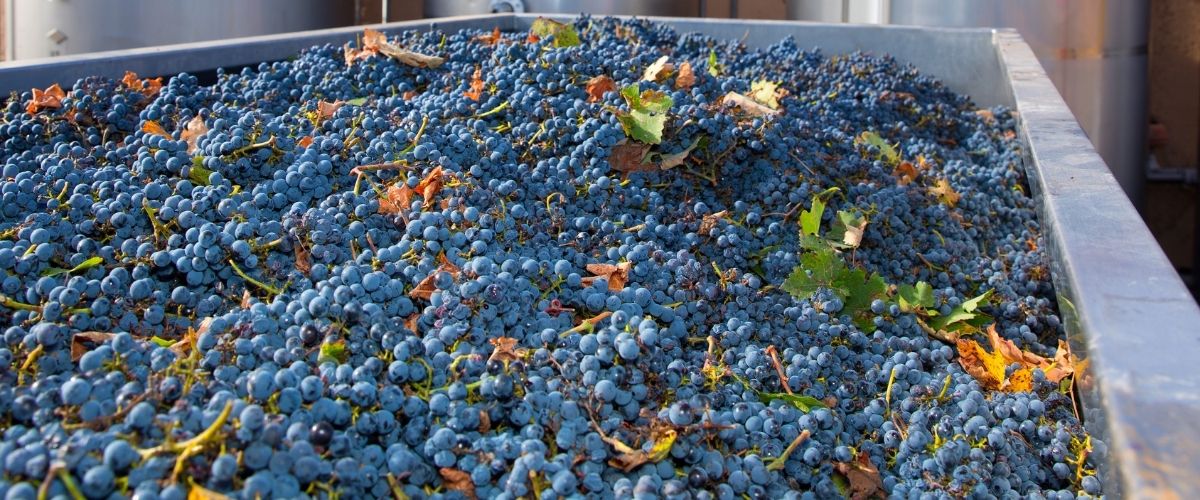Wineries need to pay attention to every detail when it comes to accounting. You need to keep an accurate record of the total amount of wine made during the year. Even a simple mistake can cost money and time. There are two mechanisms that ultimately decide whether you will stay in business.
First, how much profit you make is determined by the market based on how much someone is willing to pay for your bottle of wine. The wine industry is growing rapidly in many parts of the country. Because of increased competition, wineries will need to be creative to differentiate their products to demand higher prices.
Second, the costs of making and selling wine determine how much profit is left. Since there is not much wiggle room to increase the revenue from one bottle, how you understand and control your costs has the greatest impact on how profitable your winery is.
In this article, we are going to discuss some of the difficulties wineries face when it comes to tracking the accounting of cost of goods in producing wine.

Winery Operations
A winery has four main operations. Well, five if you are vertically integrated and harvest your own grapes.
- First, after harvesting is the crush phase where grapes are pressed and squashed.
- Second is the fermentation stage; this is the most vital part of producing wine. Fermentation continues until all the sugar is converted to alcohol and a dry wine is produced.
- Third, clarification is where the juice is separated into tanks. This allows the sediment to drop out. Winemakers will rack or siphon their wines from one tank to another. Wine is separated from the solids, which is known as pomace.
- Last, the wine is aged and bottled. There are many choices and techniques in this stage, which results in the many distinct types of wines.
Of these steps, the crushing and bottling phases are quite short, while the other stages can be exceptionally long.
Keeping Track of Costs
Because of the time it takes to create different types of wine, you will need to keep careful track of how long each type of wine takes to produce. For example, a red wine with low production values would take less time to process than a high-grade red wine. Consequently, the high-grade red wine should accumulate more indirect costs. Indirect costs include depreciation on the production facilities, labor by the wine master, utilities, production supplies, testing expenses, etc.
Your record of costs will include taking into account any wine that was transferred from barrels or tanks, any wine that spoiled before you could sell it, as well as any wine that you gave away for free or dumped because it became unsellable.
These costs are what is called cost of goods produced (COGP) and includes all the costs that went into making the wine. They include the raw materials, labor, overhead, direct, and indirect costs, which were incurred from the crushing phase all the way through bottling and storing the wine.
When a bottle of wine is sold, the cost of producing that specific wine is recorded as cost of goods sold (COGS). The difference between the revenue generated and the cost of goods sold is the gross profit on that wine.
Allocating Costs
Activity based costing (ABC) assigns overhead costs and indirect costs to related products. Activity based costing enhances the reliability of assigning costs. This enables wineries to have a better understanding of the costs associated with producing wine.
Wineries use a variation of ABC where they assign expenses to each of the functional areas in the winery. The costs are then allocated to what is a gallon-month for each wine product. For example, 100 gallons of Pinot Noir aged for six months equals 600 gallon-months. If it costs $10,000 to store the wine, those costs are assigned to the Pinot Noir based on its share of gallon-months of wine stored.
Because of the unique aspects of making wine, tracking costs can easily become complicated. Wines are commonly held in storage for longer than one year. So, not only do you have to allocate costs to several types of wines, but you also have to allocate costs to vintages of each varietal. Due to the lengthy process to make wine, it is common to lose some to evaporation. Additionally, if the wine master engages in blending two or more types of wines, the calculations change because of how these separate costs are allocated between multiple wines.
Accounting Helps Keep Track of All Channels to Make Your Life Easier
As complex as tracking costs is, you may be asking whether it is even worth it. As a winery you have various sales channels that have various profit margins. Many wine sales go through distributors who expect lower prices so they, too, can make a profit. You may only make 10-30 percent. Where performance is measured, performance improves. As you meticulously track your costs you can improve those margins.
Other than to improve profit margins, another compelling reason to keep track of costs is because it is required by the federal Alcohol and Tobacco Tax and Trade Bureau (TTB). Federal regulations include tracking weight tickets when harvesting and how much wine is available after production.
In addition to the TTB, the Internal Revenue Service (IRS) wants to see the profit levels for each product sold, as well as proof for the calculations. When the production process takes greater than two years, the IRS wants wineries to allocate interest costs. Furthermore, they want to see separate calculations for the source of the grapes, the type of wine, how long it takes to age, and the size of the storage containers used. The IRS has even created a Wine Industry Audit Technique Guide.
Frequently Asked Questions: Mastering Winery Accounting
1. What are the main operations involved in winery accounting?
- Winery operations encompass four primary stages: crushing, fermentation, clarification, and aging/bottling. Each phase plays a crucial role in the production process, from pressing grapes to aging wine in barrels or tanks. Understanding these operations is vital for accurate cost tracking and financial management.
2. How do wineries keep track of costs during wine production?
- Wineries meticulously track costs by accounting for every aspect of wine production, including raw materials, labor, overhead, and indirect expenses. By maintaining detailed records of production activities and expenditures, wineries can calculate the cost of goods produced (COGP) for each wine varietal.
3. What is the significance of allocating costs in winery accounting?
- Allocating costs through activity-based costing (ABC) allows wineries to assign overhead expenses to specific wine products accurately. This method enhances cost analysis and enables wineries to understand the true production costs associated with each wine varietal.
4. Why is tracking costs essential for wineries?
- Tracking costs is essential for wineries to optimize profitability and comply with federal regulations. By monitoring expenses and analyzing profit margins across different sales channels, wineries can make informed decisions to improve financial performance and ensure regulatory compliance.
5. What challenges do wineries face in cost tracking?
- Wineries encounter various challenges in cost tracking, including the complexity of wine production processes, extended aging periods, and loss due to evaporation. Additionally, blending different wine varietals poses challenges in allocating costs accurately.

6. How do federal regulations impact winery accounting practices?
- Federal regulations, enforced by agencies like the Alcohol and Tobacco Tax and Trade Bureau (TTB) and the Internal Revenue Service (IRS), require wineries to maintain detailed records of production activities and expenses. Compliance with these regulations ensures transparency and accountability in winery accounting practices.
7. What role does accounting play in improving profit margins for wineries?
- Accounting plays a crucial role in analyzing profit margins across various sales channels and identifying opportunities for improvement. By tracking costs and revenue streams, wineries can optimize pricing strategies and enhance profitability.
8. How can wineries navigate the complexities of cost tracking?
- Wineries can navigate the complexities of cost tracking with the assistance of experienced accounting professionals. Partnering with firms like Protea Financial enables wineries to access expert guidance and ensure compliance with federal regulations.
9. Why is accurate cost tracking necessary for wineries?
- Accurate cost tracking is necessary for wineries to make informed business decisions, maintain financial stability, and demonstrate compliance with regulatory requirements. By understanding production costs, wineries can optimize operations and maximize profitability.
10. How can Protea Financial assist wineries with cost tracking and compliance?
- Protea Financial offers specialized expertise in winery accounting, helping wineries navigate the complexities of cost tracking and regulatory compliance. With a dedicated team of professionals, Protea Financial provides tailored solutions to meet the unique needs of winery businesses.
Let Protea Financial Be There to Help You with Cost of Goods Accounting for Your Winery
All this can seem overwhelming. It can be, but it does not have to be. Our expert team has worked with the wine industry for years. We can help you navigate the difficult terrain of tracking costs and staying in compliance with Federal regulations. Reach out to us here at Protea Financial. We would love to help!



